Which of Newton's Laws says "An object at rest will stay at rest until acted on by an outside force?"
Newton's 1st Law
What type of friction acts on an object that is in motion?
Sliding Friction Or Kinetic Friction
What is the weight of a 12 kg mass?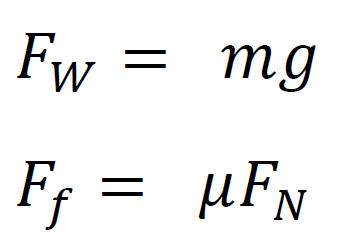
120 N
FW = mg = 12(10) = 120 N
Name BOTH of the unlabeled forces on the force diagram below. 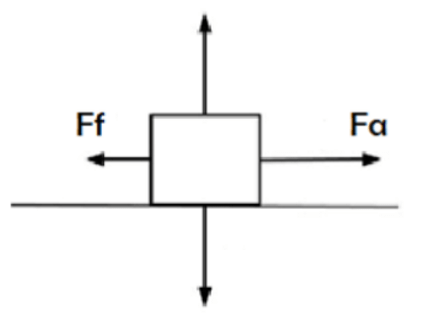
Upwards force = Normal Force
Downward force = Weight or Gravitational Force
If an object is moved from the surface of Earth to the moon, does its mass, inertia, or weight change?
Weight only
Which of Newton's Laws says that if you punch the wall, your hand will hurt because it hits you with the same amount of force?
Newton's 3rd Law
Which scenario would have the smallest coefficient of friction?
a) Metal on Ice
b) Wood on Carpet
c) Rubber on Wood
d) Wood on Sandpaper
Metal on Ice
A 90 kg model rocket experiences an applied force of 2000 N during takeoff. What is the Net Force acting on the rocket?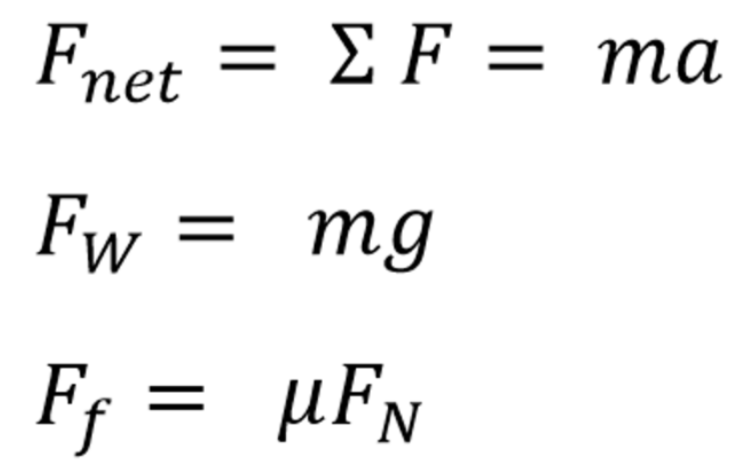
1100 N
Fw = mg = 90 (10) = 900 N
FNet = FA-Fw = 2000 - 900 = 1100 N
Assume the box below is moving to the right. Is it moving at a constant velocity, getting faster, or getting slower? 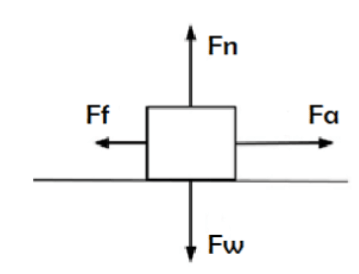
Getting Faster
Which object has the greatest inertia?

Object Z because inertia and mass are the same thing.
Which of Newton's Laws says that if a constant force is applied to an object, but the object's mass increases, then its acceleration will decrease?
Newton's 2nd Law
As the Normal Force acting on an object increases, what happens to the amount of friction that object will experience?
The friction will increase.
A 20 kg box is at rest on a floor which has a coefficient of static friction of 0.5 and a coefficient of sliding friction of 0.3 . How much force is required to make the box start moving?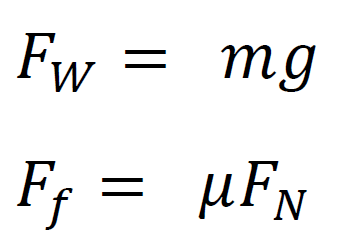
100 N
FN = FW = mg = 20(10) = 200 N
Ff = (coeff of static friction)*FN = 0.5 * 200 = 100 N
A tennis ball is thrown at and hits a bowling ball in space (no gravity). A student draws the following force diagram for the two objects. According to Newton's 3rd Law, what is wrong with this force diagram?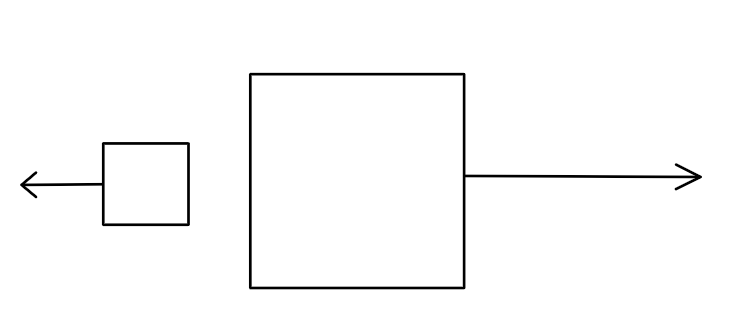
The two forces should be equal to each other, so the arrows should be the same length.
If an object is in Equilibrium, what are the two types of motion it could have?
At rest or constant velocity
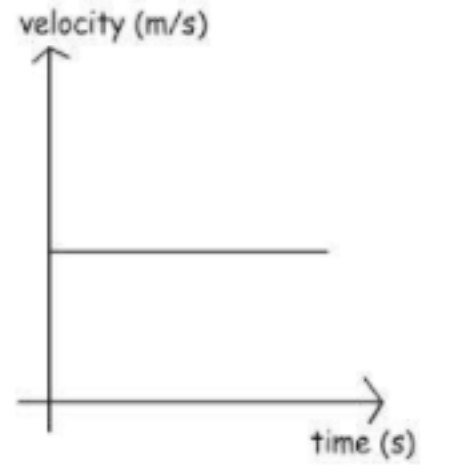 How much Net Force is acting on this object? Which Law does your answer correspond to?
How much Net Force is acting on this object? Which Law does your answer correspond to?
Net Force = 0
Newton's First Law
Why is it harder to make an object start moving than it is to keep it moving? Be sure your answer mentions static and sliding friction.
A 90 kg model rocket experiences a force of 2000 N during takeoff. What is the rocket's acceleration during takeoff?
12.2 m/s2
Fw = mg = 90 (10) = 900 N
FNet = FA-Fw = 2000 - 900 = 1100 N
a = FNet/m = 1100/90 = 12.2 m/s2
Write the name of each type of force described below.
1. Force that opposes motion
2. Force of gravity acting on an object
3. Force that is exerted by a solid surface and is perpendicular to that surface.
4. The vector sum of all Forces
5. Force in a rope, chain, or cable
1. Friction
2. Weight
3. Normal Force
4. Net Force
5. Tension (Force)
Write the units for each of the quantities below:
1. Mass
2. Force
3. Acceleration
4. Velocity
1. kilograms (kg)
2. Newtons (N)
3. meters per second squared (m/s2)
4. meters per second (m/s)
Two people on roller skates push each other. Compare the amount of force AND acceleration each skater experiences. 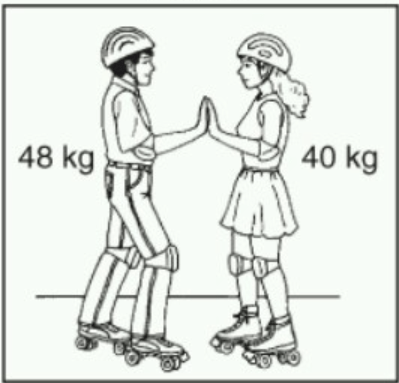
They experience equal forces.
The girl experiences a greater acceleration.
If an object is on a ramp and the ramp is tilted so it becomes steeper, what would happen to the amount of frictional force acting on the object?
It would decrease because the normal force decreases as a ramp becomes more inclined.
A 20 kg box is at rest on a floor which has a coefficient of static friction of 0.5 and a coefficient of sliding friction of 0.3 . If the box is pushed just enough to set it in motion and that force is maintained, what will its acceleration be?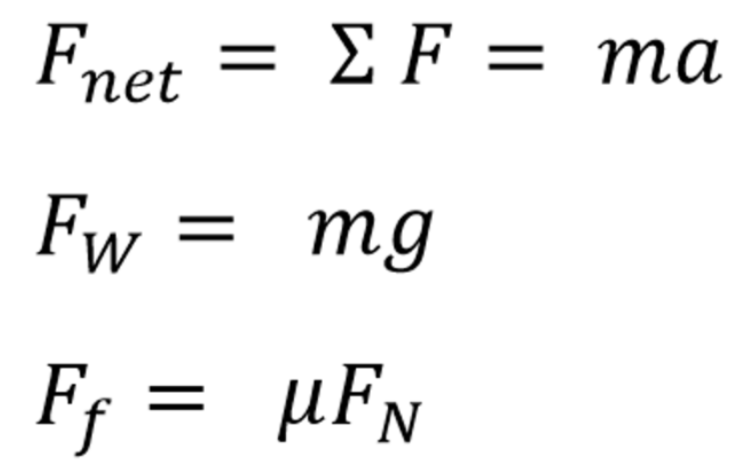
2 m/s2
FA = 0.5(200) = 100 N
Ff = 0.3 (200) = 60 N
FNet = FA - Ff = 40 N
a = FNet / m = 40/20 = 2 m/s2
Draw a force diagram for an object sitting on a rough inclined surface.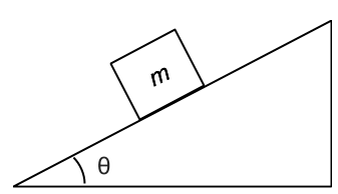
What is the physics equation for this graph?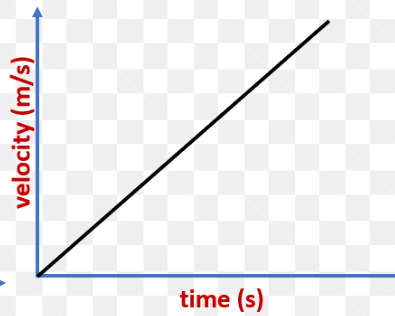
y = mx --> v = a t (velocity = acceleration * time)